📣Update! Update! Get your update!📣
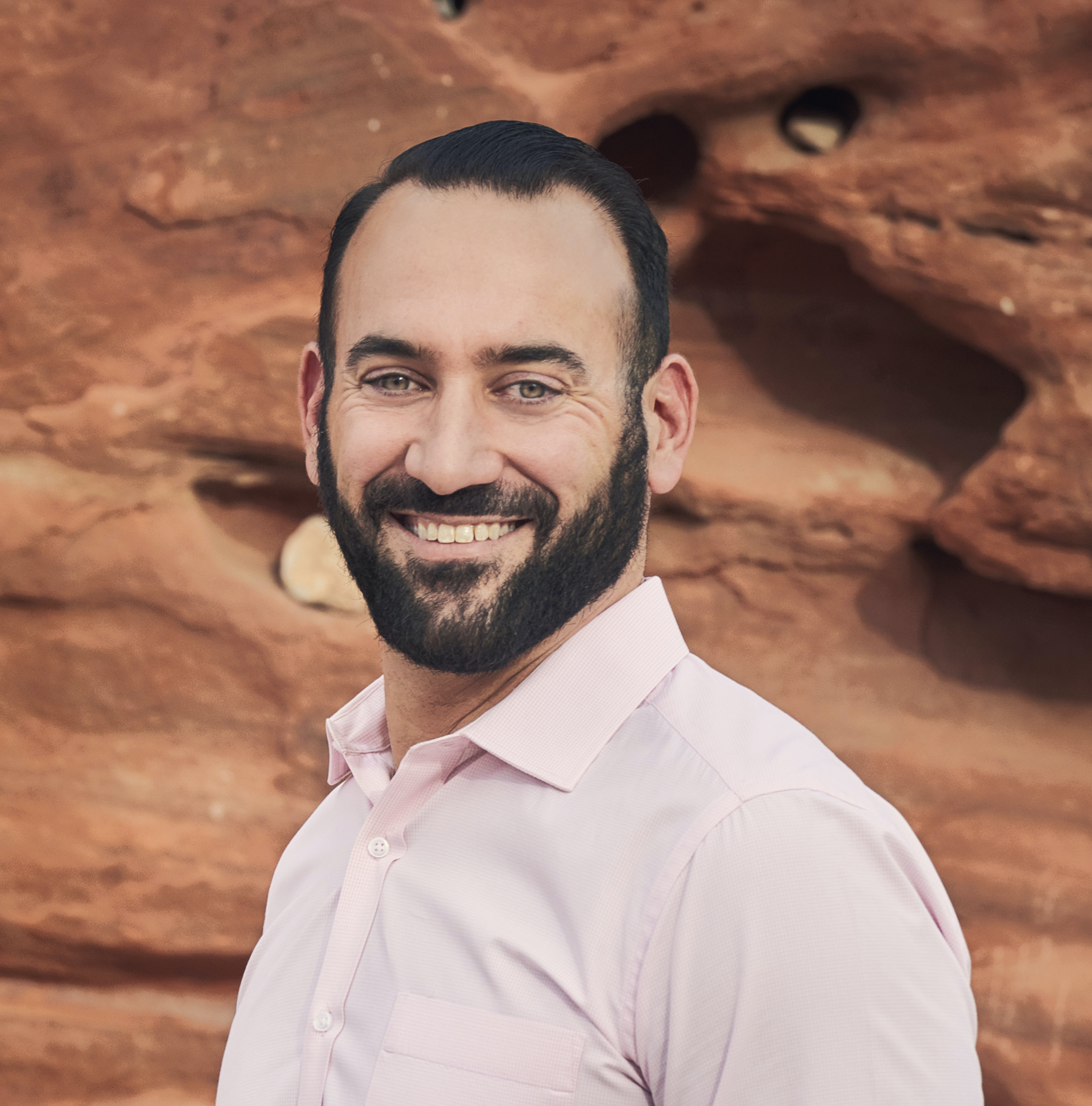 David Lehrner
David Lehrner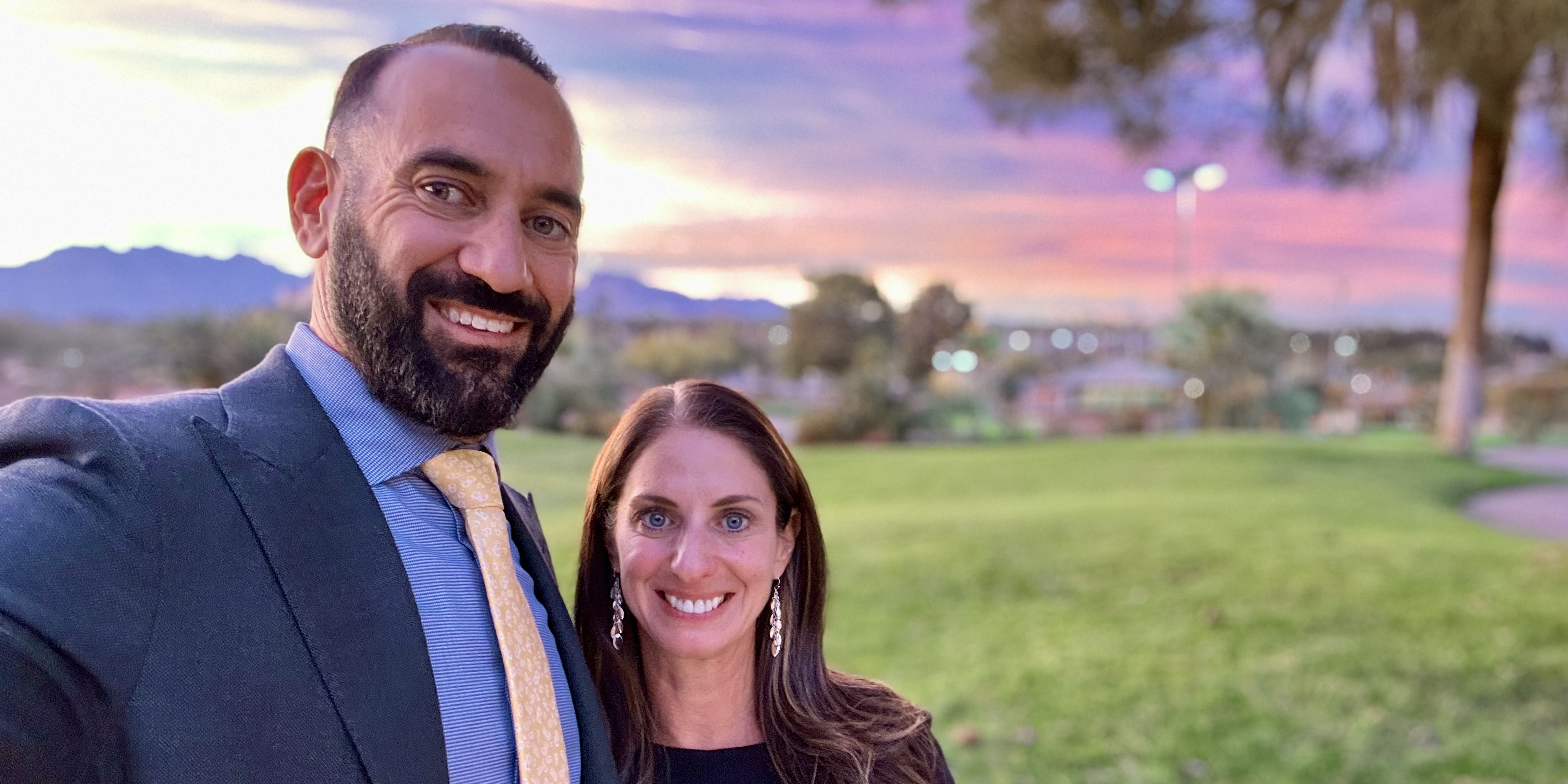
Well, it’s been a LONG time since I’ve written an update on my recovery and after a recent lengthy conversation with a family member, I was inspired to finally write something down. Just like before it will probably seem very verbose but in reality it only scratches the surface 🤪. As I’ve been told I’m rather long-winded these days and tend to perseverate, I’ll start with the TL;DR version (“too long; didn’t read” for the boomers) and will fill in the gaps below.
The short story is I have continued to defy initial expectations and things are mostly back to normal. I returned to work on June 12th and I have recently been officially cleared to return to “normal” exercise including running and riding a bike outside but I’ll have to continue to patiently wait until March to enjoy a margarita.
Where are we now?
After a BUSY Thanksgiving week filled with lots of food, family and community service I constantly had one thought on my mind; I just kept thinking about how much I had to be thankful for my entire life, but especially this year. The more I thought about it the more unique memories came flooding back to me about how much stuff has happened from the time I returned home so I'll try to share some of them with you. I'll start by explaining some of the ongoing medical appointments and finish with some return to life stories so feel free to scroll to the end for the fun stuff.
Therapy
Craig Telehealth
SLP
I continued my work with Allison via Zoom once or twice a week until the middle of July. I don't think I previously dug into what symptoms I was presenting but the most noticeable was aphasia (word finding). We had identified several words that I had been exposed to frequently that could not be recalled quickly. This is a common side effect of injuries to the temporal lobe. I was given techniques to use whenever I noticed an issue placing a word. Looking back at my notes a few of those techniques were:
Pause/think - instead of using crutch words or phrases (ah, em, er, that’s an interesting question, etc.), actually be silent and allow yourself to focus.
Semantic meaning - while you're pausing and thinking think of the meaning of the word to help jog your memory.
Phonetic letter sound - oftentimes you will know the root letter but can't complete the word. Go through the alphabet and create root words with different phonetics. Chair, cheat, child, children all start with the same phonetic sound but veer off dramatically.
Really stuck..ask for assistance - there is no shame in asking for assistance. Describe the word that you're struggling to find by presenting the previously used techniques to someone else.
High intensity and frequent practice will help improve (20 minutes a day) - no real description necessary, practice makes perfect.
We practiced these techniques by playing several "games." Some of these included:
Photo hunt - name all of the things displayed in a photo. It could be kitchen utensils, car parts, household items, etc.
Word list - Name as many words that start with a certain letter in a time limit
Category Members - Fill in the columns using the letter on the left and the description above similar to the version below.
| Fruits | Colors | People's Names | Cities | |
| B | ||||
| L | ||||
| P | ||||
| T |
Allison created measurable goals that tracked progress including # of words in a minute and the reduction of errors and after several months it was agreed that I had the tools to be successful and continue improvement on my own. I will say this is still the thing that I struggle with the most but it is significantly reduced in occurrences.
Community Reintegration
Casey was my OT from the Community Reintegration department that I continued to work with. We had weekly meetings where we discussed many different things but we mainly focused on return to work strategies and she acted as my liaison with my employer’s human resources department. Again, looking back at the timeline I now know why Casey was so hesitant for me to just jump back to work. 😀
One of the most impressive things that they did was prepare a three hour simulated work environment test conducted via Zoom. Based on my previous description of my job tasks and feedback provided by my manager, Casey and Allison created a very detailed test that is included below.
Simulation Tasks
In this simulation exercise you should complete as many of the following tasks as you can. If there is an asterisk ** next to the item it must be completed today.
At 11:20 a.m. call 303-789-9813(8713) and leave a message describing a specific application of how you can incorporate 1 potential strategy to deal with work stress **
Respond to emails received within the timelines as specified**
Review the Pre-Sales Work Flow diagram
Prepare a 5 minute presentation to explain the contents of the graphic to Allison and Casey**
Presentation must start by 11:05 a.m.
Email your upcoming medical appointments and the objectives of each appointment(s) to Allison’s email.
Must include date, time, provider, name.
Cannot be completed before you meet with Janet.
Explain your challenges after injury and needs to Janet** (practice opportunity for self-advocacy and disclosure with employer. Think of when you are meeting with your team during your first week back. Also works on organization and verbal expression goals).
Use your goal assessment form as a tool.
Contact Janet to schedule a meeting. The meeting needs to be completed by 11:00 a.m. Her email is: XXXXX.
The meeting should not exceed 15 minutes in length.
After you present your pre-sales work flow diagram to Casey and Allison fill out self-rating form on execution of two areas…
Presentation *
Meeting with Janet *
You need to schedule new customer for lunch with the Sales team week of 6/26/23. Is this something you research and execute or delegate? Propose plan/needs however you would do for work typically to Casey via email.
One customer has a food allergy.
Desirable trait: Can meet in 1.5 hours tops.
Your boss and AVP need to be able to attend.
Rules
While carrying out this simulation exercise you must obey the following rules:
You should carry out all these tasks but may do so in any order.
You must adhere to the deadlines/time parameters.
Execute times per your time zone.
All times in this document are specified as Mountain Standard Time zone.
Be as efficient and polite as possible without rushing excessively
Do not sit at the computer for more than 70 consecutive minutes without a brief change of position.
You must allot at least 25 minutes between 11-12:00 p.m. to debrief with Casey and Allision prior to the conclusion of the session.
Review questions
How was David’s performance with verbally presenting information in an accurate and concise manner?
How was David’s performance on paying attention to details in reading and in his written communication?
How was David’s performance with listening to all questions asked, remembering the information, and providing thorough and complete responses?
How was David’s performance with meeting time deadlines and restrictions?
How was David’s performance with managing distractions?
How was David’s performance with managing and regulating his frustration, anxiety, and stress through tone of voice, body language, and/or “prickly” behavior/mood?
As you can tell this was a VERY thorough test filled with measurable goals that could be evaluated including my own ratings. It was an interesting experience to be on camera and have my screen shared knowing that people were judging each mouse click and my obsessive task switching. We regrouped as a team and reviewed the ratings that all participants had observed and it was determined that I did well enough that they were confident that I could return to work successfully.
PT
When I returned home I was able to get started with PT which was designed to work on balance and shoulder mobility. After an initial assessment, I was able to schedule appointments roughly twice per week. They had me do some of the same balance tasks but sprinkled in some shoulder work including a plank game tapping light-up blaze pods. One of the tasks that most obviously indicated there was still an issue was the Bodyblade. I couldn't get the coordination on the left side to make the movement repetitive without shimmying my entire body. After a few weeks, the staff indicated that they were out of approved visits and I would no longer be allowed to meet with them. I had slightly mixed emotions as my shoulder still wasn't "normal" but I also didn't believe that their routine of multiple simultaneous patients without direct supervision was maximizing my potential.
I booked an appointment with a local Orthopedic surgeon for him to do an evaluation. It was a fun learning experience. When he saw the X-rays he described my shoulder as a "bag of bones" (photo below) which gave us all a nice laugh. He stated that he didn't believe that anything required surgery and explained why nothing had been done upon arrival at UMC. He was pleased with the calcification and explained how quickly the body attempts to heal bones from trauma. We left with a new PT referral for shoulder impingement only.
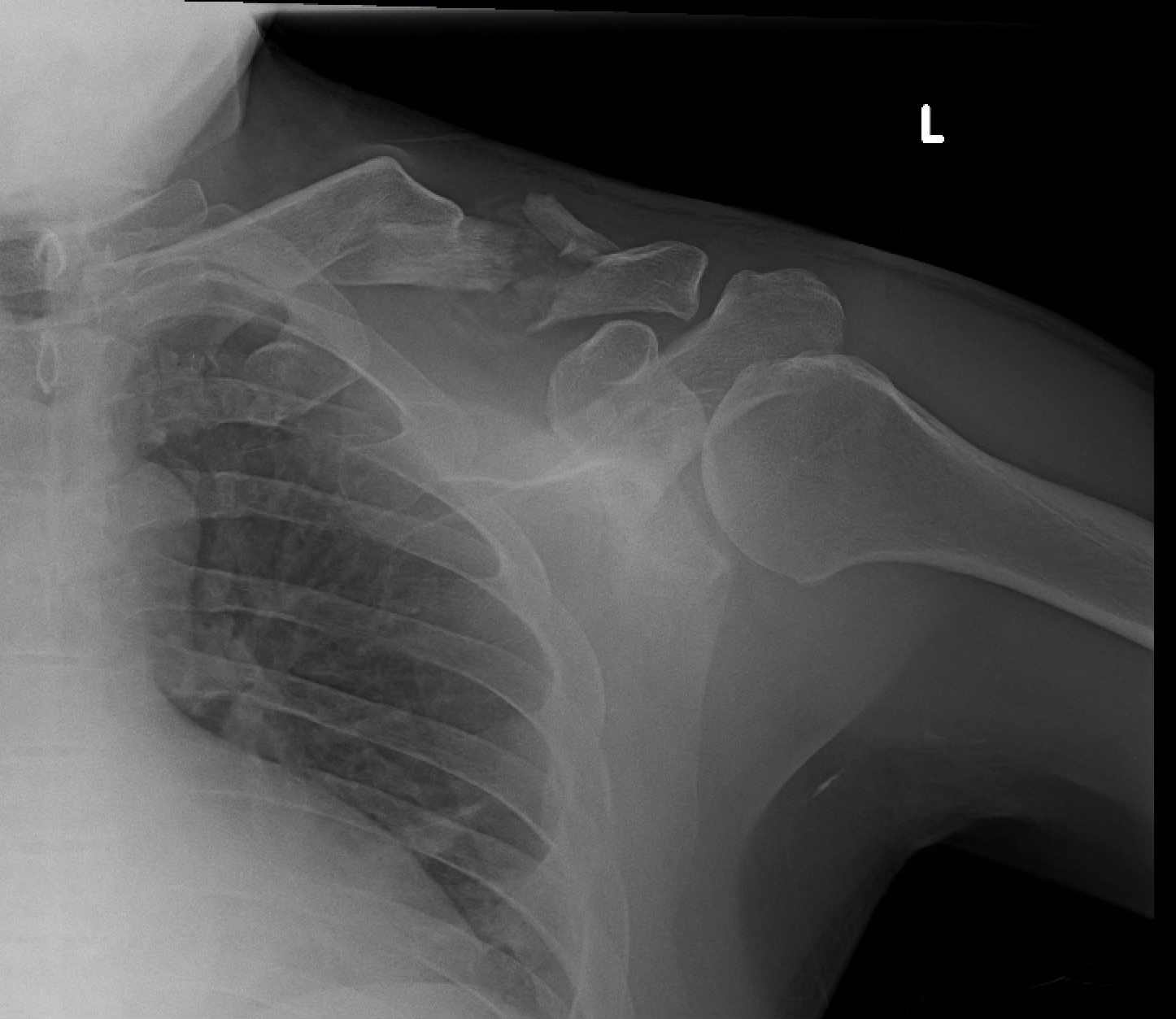
After receiving the new referral from my doctor, I found a new PT office to try. Since this referral didn't include any balance and coordination we were now allowed to focus only on my shoulder. I went two to three times a week and had different but similar experiences at the new location. The process started in the gym followed by one on one PT that included manual therapy. The therapists were great but I had three different therapists even after asking to be scheduled for the same therapist. I feel like some of the manual therapy started to make an improvement and included new, to me, techniques like dry needling. After a short time, the front office stated that I had no more approved sessions so I could not schedule any additional appointments but they would call me when they were able to contact my insurance. Well, the office did not call me back. In fact, they never contacted me again so I guess they fired me even though I contacted my insurance and they stated that there were no restrictions on my policy and they didn't see any approval denials.
After I was unable to schedule any additional sessions I reached out to my coach to see if he had any recommendations. He said he did but unfortunately, he works out of a facility that does not accept insurance. At this point, I was willing to try anything so I set up an appointment with Rob. This is one time where I'm going to admit that it pays to know someone who knows someone because when I met with Rob he already knew my whole story so I didn't have to start at square one. But what really amazed me was unlike at other locations he didn't just measure my shoulder mobility. He evaluated my entire body and explained how my foot can affect my posture which can affect my shoulder. I explained to him that based on what I saw, I'm confident I wouldn't have passed half the tests before the accident and really do believe this process could be beneficial for most endurance athletes. I didn't have any real issues before the accident but I believe that focusing on improving strength, flexibility and mobility in the areas he tested would have had a positive impact on my performance. Work, vacation and the holiday have gotten in the way of going as frequently as I would like but I know that we're on the right track to get my shoulder as close to normal as possible.
I do respect that I'm in an amazing position at this point as I'm not on pain meds, I sleep at night and I can do all of the activities I want to do but there are times that I know things aren't normal so I'm going to keep working on it until I stop seeing improvement.
Cardiology 🫀
I’ll warn you now, this section will be LONG!
At the suggestion of Dr. Stephanie (my sister) I made an appointment with the same Cardiologist I had seen after my last syncope (fainting) episode on August 17, 2016. You are probably scratching your head for at least two reasons. First, what does syncope have to do with this? Well, it is widely believed that on March 12th of this year, I lost consciousness for unknown reasons resulting in my accident mainly because there was no sign I braced for impact. And the second reason is you probably didn’t know that I was briefly hospitalized for a syncope episode in 2016. That episode was mostly explainable (to me) as it was at the end of a gym training session after a previous night's lack in sleep and poor nutrition (beef jerky and Red Bull) after a nine-hour drive back from California. What has been unexplainable to most of us is that in 2022 I completed my first 70.3 Ironman, my first full marathon and my first full 140.6 Ironman all with no medical episodes so let the testing begin.
Stress Test
As anyone who is over 30 knows, the first thing you get to do when you see a cardiologist is schedule the treadmill stress test! It's a simple test where you begin walking on a treadmill while wearing an ECG device the speed and incline of the treadmill adjust until you can no longer continue. During my test, I reached the maximum incline and was feeling pretty good but as the speed increased I reminded myself that I wasn't supposed to be running. When the speed finally increased to a running speed I decided that I would only do one minute before ending the test even though I felt like I could continue. This is only notable because when I had my follow-up appointment with the doctor he stated that I had the second longest time of any of his previous patients. Lucky for me, Jess was there to witness when he told us that his best was Tina Turner!!! If I had known it was a competition I might have gone a little longer but I've accepted the fact that Tina still holds the record.
Halter Monitor(s)
After the doctor stated that there was nothing abnormal discovered during the stress test he discussed with us that due to having several syncope episodes years apart that he would like to install a loop monitor. A loop monitor is a battery powered implantable electrocardiogram heart rate monitor that lasts approximately three years. The doctor explained that if I were to have another syncope episode this device would be invaluable to know why it happened.
In order to qualify for a loop monitor you must first wear a traditional portable electrocardiogram device more commonly called a halter monitor. In July, my doctor wanted me to wear a two week continuous monitoring device but insurance denied the request and I was required to wear a 24 hour event monitor where I was supposed to press a button when I had an issue. The problem here is probably obvious to you...I never knew that I had an issue so when would I press the button? I wore it and even did an indoor trainer bike ride while wearing it where I purposely pressed the button a few times just in case I didn't know what I was supposed to be feeling. 😀 At the follow-up the doctor confirmed that there was nothing to be seen during my time with the device and scheduled the loop monitor installation.
Then insurance stepped in and denied the loop monitor installation because I hadn't worn a monitor for two weeks. In case you missed it, they also denied my doctor's request for that two week monitor the first time. So now I got rewarded with a prescription to wear a three week monitor. This was a much nicer device that was easier to sleep in but I still couldn't wear it while swimming and had some difficulty with the leads staying on during activities where sweat was involved. After surviving that torture we had another follow-up where we learned that they still didn't see any anomalous activities and were again scheduled to receive a loop monitor on November 7th. However, on November 3rd the office called to inform me that insurance had canceled the preauthorization so my appointment would have to be canceled and the original denial would have to be appealed. While annoying, I did receive a letter on Thanksgiving that the appeal had been approved! I spoke with the office this week and I am now officially scheduled to have the loop monitor installed December 5th before my doctor leaves for his vacation during the holidays.
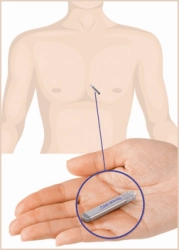
Bubble test
This was a fun one. During my initial appointment with my doctor, he agreed with Dr. Stephanie and ordered a bubble test for my next visit along with the Stress Test. I didn't know much about it but it was a rather easy in-office procedure. They prep you by inserting an IV line in your wrist before entering an office room where they do an ultrasound of the heart while they insert agitated saline (bubbles) into the IV. My doctor was in the room with the technician and asked to see it done again where he confirmed audibly that I had failed and left the room. It was a bit unusual as there was no further discussion but since they didn't admit me to the hospital I assumed it couldn't be TOO bad 🤷🏻♂️. I quickly asked Dr. Google about it and learned that it meant that the bubbles had been seen passing from one side of my heart to the other known as a shunt. Below is what Dr. Google has to say:
Normally, your lungs will simply filter out the bubbles. But if you have a tiny opening between your heart's upper chambers (the right and left atria), some bubbles will move through that hole and appear on the left side of the heart. This opening is called a patent foramen ovale (PFO). About one in four people have this finding, which occurs when the hole—which is present in everyone before birth as a normal part of development—fails to close fully upon your birth.
So what does that all mean? Well, I went down a rabbit hole and learned a ton about PFO and what it means to the human body. At the follow-up with the doctor, he stated that he actually wasn't concerned with the finding as I have had a few MRI's this year and none had any indication of stroke which is the primary indicator for PFO remediation. He did say that if we wanted a second opinion we could meet with his partner who specializes in dealing with PFO's and we agreed to make that appointment.
PFO
We met with the new doctor and had a rather lengthy discussion about how I got to his room. He appeared to have reviewed the bubble test results before entering the room and listened to my exercise history and the quick version of my earlier hospitalization. He then explained more details about what having a PFO means before asking us “How aggressive do you want to be in the diagnosis?” to which Jess answered “YES!”
An interesting observation about this initial appointment is that Jess and I were both impressed with the time and detail that the doctor spent discussing the issue with us. What made it all the more interesting is that Dr. Stephanie sent him a text that afternoon and he was surprised to learn that his most unique patient of the day was related to one of his friends. I mention this because it means his bedside manner we had been impressed with wasn't an unordinary for all patients and just impressed us even more.
The doctor explained that in order to qualify for PFO closure they have to do a few exploratory procedures. The tests were a Right Heart Catheterization (RHC), Left Heart Catheterization (LHC) and a Transesophageal Echocardiography(TEE). The purpose of these procedures was to more clearly see the size of the hole and take accurate measurements. The TEE procedure is where a camera is passed through the throat that allows photos to be taken that aren't impacted by muscle and bone like a standard echocardiogram but requires general anesthesia. The procedure was scheduled for August 29th and was a pretty anticlimactic event for me, as predicted. It was a bit stressful for my family as the procedure went longer than anticipated and the doctor asking to speak to them in a private room caused some concern. What he told them is that it all went well but he spent additional time because a few bogeys appeared that he wanted to inspect completely. Below are Jessica's notes from that meeting.
No heart hypertension - heart looks good. Heart strong and valves fine.
The hole is larger than anticipated and will need to be closed. The right side of his heart is enlarged due to too much blood flowing from the high pressure to low pressure side. Doctor said in 90% of patients the heart will return to normal size once the PFO is closed, but right now it is working too hard.
Bigger issue/question is that there appears to be an anomalous branch off the right coronary artery that looks as though it is headed towards the left ventricle. The camera they were using couldn’t get the angle they needed so they ordered a congenital coronary ct scan to take a 3D picture to determine if it’s a normal variant branch or something pathological. They’re doing the CT scan now, but may not get the results right away.
Soon after recovery, I was taken for a CT to check for the suspected anomalous branch and luckily it was found to not be present and I was free to go home.
Our follow-up appointment was pretty unsurprising and the doctor explained a bit about the procedure and asked if we had any questions or concerns. As I had spent a lot of time on Dr. Google learning about PFO closure and the pros and cons of the procedure it was really just time to get the procedure scheduled. I'm sure that some patients might have some hesitations or concerns the doctor might have to combat but everything I had read indicated it was a very routine procedure and protects against stroke later in life and could potentially reduce my enlarged heart which could also delay heart failure. At the end of our appointment, we scheduled the procedure to be completed on September 27th.
The day has finally arrived! We had an early arrival time at Sunrise Hospital and that's when I started getting a lot anxious. Even though I had done a ton of my own research one specific thing I had read was the cause of my anxiety. The PFO closure procedure is to place an occluder device across the hole in the heart and over time the body will endothelialize (layer of cells grow over the device) making the patch permanent. This is all done via a catheter inserted in a large vein in the groin without general anesthesia. Say what? Yeah, they insert a largish device in a vein in your groin and deploy a permanent device in your heart while you are consciously sedated or some use the term twilight sedation. I read that this is preferred as it is faster recovery and they prefer patients to be reactive during the procedure. Isn't science amazing? So I started getting a little nervous about being "awake" during the procedure but the show must go on. I'm wheeled back to the cardiac catheterization lab and the doctor meets me and we start joking about how I am delaying his tee time again. I remember hearing him order drugs from the nurse and that was it. I don't even remember the nurse bringing a needle to the IV in my left wrist, just waking up in the recovery room ~40 minutes later. All the nerves were ultimately for nothing as I literally felt like I could have walked to the car. I had to remain in recovery laying down for 4 hours to let the incision site heal before I was moved to my own room on the cardiac recovery floor. I had to remain overnight for monitoring purposes which included three rounds of antibiotics and a bubble test 24 hours after closure before I was cleared to return home. Below is Jess's summary of the closure day:
Checking in to let you know that everything went smoothly today with Dave’s surgery and all is good on our end. His surgeon described everything as “perfection”, which is quite nice to hear after the craziness of these last 6.5 months. Dave is doing wonderfully – he’ll spend tonight in the hospital and then we’ll be able to go home tomorrow. He has another 6 weeks of restricted activity while his body endotheliailzes around the new patch in his heart, but after that, the doctor described this as a new beginning. ❤
I just wanted to reiterate again how great the doctor was and actually knew me as a patient. As Jess mentioned above, he informed us without us asking that during the endothelialization phase that I could swim and indoor cycle at a nonrigorous level but absolutely no running.
A week after the procedure we had the follow-up with the doctor and he confirmed that everything appeared to be healing correctly and that my next visit would be in a few months where they'll do another bubble test to make sure it remains closed. Before leaving the office I did ask for clarification on what nonrigorous exercise meant to him and he paused to think and said try to keep my heart rate below 175. When Jess heard this she almost fell out of her chair and I just chuckled. I don't think my heart rate has been above 165 in the last five years so I didn't think it would be too hard to abide by. What was interesting to me was the concern about running because the jostling could potentially dislodge the device before endothelization was complete. If that happens, the only way to retrieve the device is via an open heart procedure so I agreed to oblige by his rules.
Another thing that is really interesting about this whole procedure is that this was my FIRST surgery in 2023.
Below are photos of the delivery device and the actual device after installation because it is fascinating (to me).

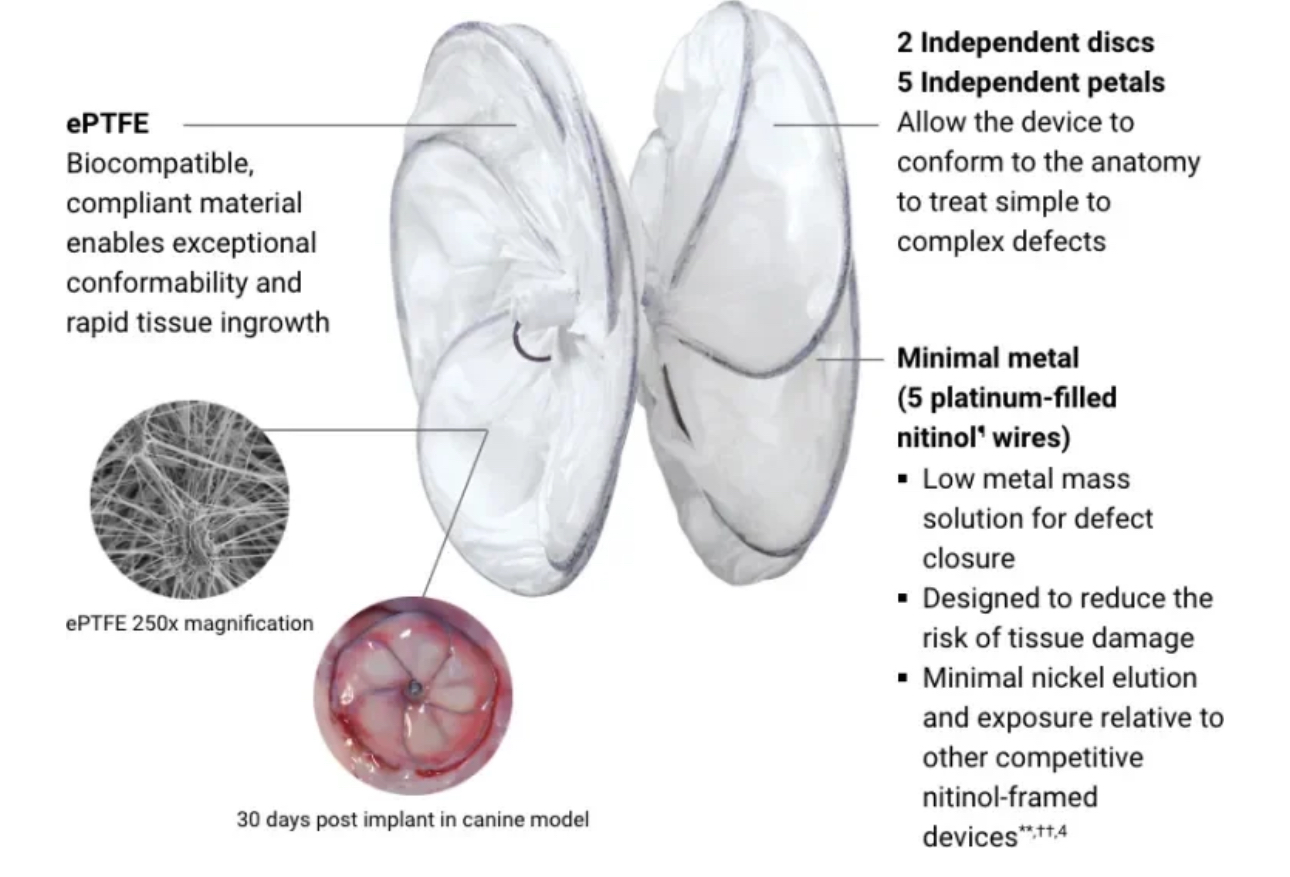
My actual implant is pictured below:
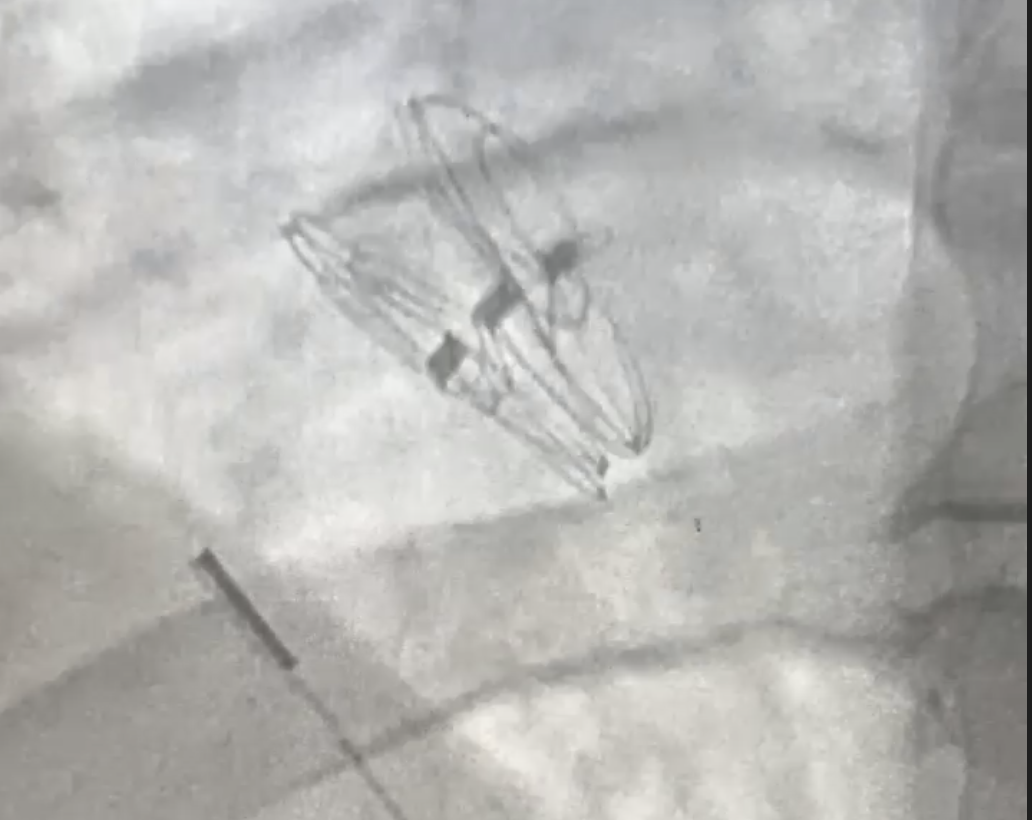
I told you this was going to be long, but I hope it was as interesting as it was to me! I ended my last update that not knowing the cause of the accident had been the most difficult part of coping with the severity of the accident and I hope that this finding/remediation can make us all feel better about reducing the potential for a repeat occurrence.
Return to work
On Monday, June 12th, exactly three months following the accident, I returned to work in a limited fashion. At the time it felt like an eternity because I was itching to have a purpose and be productive but after continuing to read and learn more about my injury I do understand how lucky I am to have recovered so quickly. Casey and my employer had created a return to work strategy that was a ramp up policy where I was to work for the first few weeks in a limited capacity with limited hours in the office and based on feedback would adjust as deemed necessary.
I fully understood that the motivation for the restrictions was to ensure a successful workplace reentry for everyone but at times I felt like I was treated like broken glass and at times did not really feel like I was being a productive team member. This weighed on me pretty heavily especially since I had been tested and demonstrated appropriate levels of executive function.
On June 21st I took and passed the Microsoft AZ305 exam which was the second exam required to gain the Azure Solutions Architect Expert Certification. In hindsight, it might have been a bit early in the process but I knew that "achieving one Engineering Level Cloud Certification by 3rd quarter of 2023" had been a measurable goal assigned in my annual review before the accident. I began studying by using John Savill's YouTube training series and even downloaded one of the episodes to watch on the return flight from our Hawaii trip (more info down below :). I remember the day that I took the test feeling a bit fatigued and unfocused before it started but I knew that the worst case was that it would be an experience for the next attempt. I had been told not to power through these feelings but I deemed there was no real risk so I kept going until I actually reached the end of the exam. When I clicked the Finish button I would have bet against myself but I was pleasantly relieved to see the PASS screen.
MGM
Here's another unexpected escapade for 2023. On September 12th I was asked to go to the data center to assist our customer with an issue they were encountering. What issue might that be? Well, our state's largest employer had a cybersecurity incident that was affecting business operations (gaming, hotel and food and beverage) at most of their properties. For the next six weeks, we had a team on site 24/7 offering whatever assistance we could provide. It was a pretty interesting time that immediately put me fully back to work and even included extended time in a data center. There were many long days and several really early mornings assisting with cutovers. Throughout all of this, I was still somehow able to do the two cardiology procedures and squeeze in a few PT sessions but I did have to curtail both my sleep and exercise routines substantially.
The key takeaway from this specific time is that I was able to be helpful, productive and work well with a large team in a stressful environment. I'd also wager that no one who didn't know me had any idea any of this had and was happening to me in the background. The amazing part of the PFO closure procedure is I was only out of the office for two days and when I showed up on Friday the 29th even my coworkers couldn't believe I had heart surgery 48 hours ago.
Insurance
Hmmm...here's where I'm going to vent a little bit. Overall, I'll admit that insurance has been a lifesaver and came through when it really mattered but there is the one ongoing incident that has caused more heartache than it should have (heart pun intended). It really exposed me to the issues with healthcare. These diagnostic procedures they were denying had been ordered to prevent future catastrophic expenses but they were unwilling to look at the whole picture. I was unable to attend any reviews and my health advocate I was assigned to only offered me two suggestions. One was to file a complaint so that my concern would be documented. I asked what the outcome of this complaint would be and she stated so it would be documented. I have no idea how that is helpful but there you go. Option two had been pushed on me twice at the end of our calls. That was, "Do you need help scheduling your flu shot?". I've left a few stories out but that to me just epitomizes how unaware this advocate was of my situation and how utterly unhelpful they were.
Routine
Alright, now that all that serious stuff is out of the way let's talk about some of the fun things that happened simultaneously since returning home.
During my initial recovery time I wasn't able to run or ride a bike outside but that didn't mean I couldn't socialize so instead of participating in my local triathlon clubs' scheduled events I volunteered to assist however I could. I helped set up and tear down items, assisted swimmers in finding the water exit point, guided cyclists as they turned back to the transition area and any other way I could be useful. It was great to see all of the regulars and help encourage/assist the newer members.
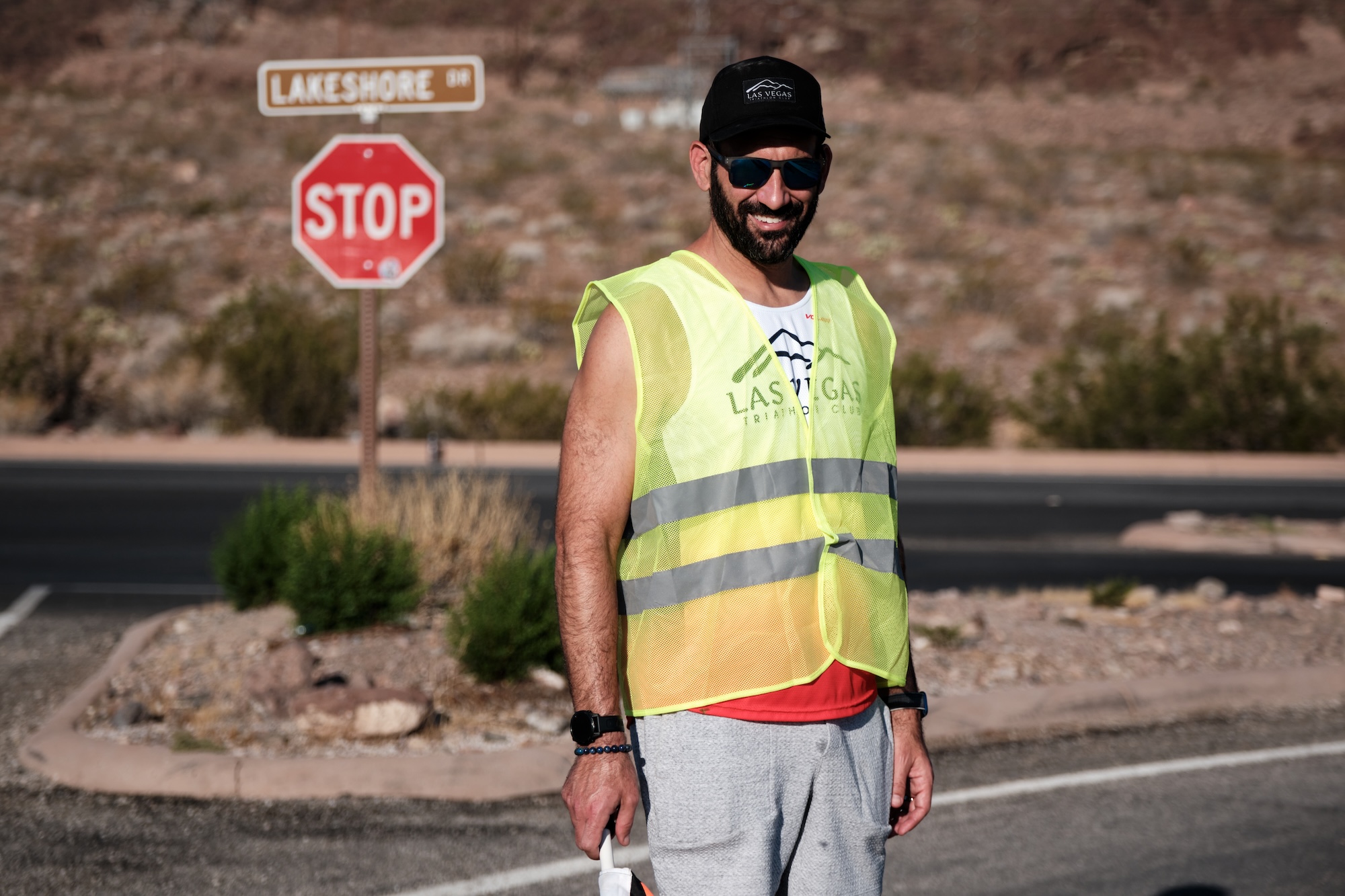
Upon returning home I really wanted to thank the people that had helped me. Previously, my family had given me a bracelet I still wear to this day that includes the colors that the Brain Injury Association of America uses to promote Brain Injury Awareness Month in March of every year (the irony is not lost on me). I was touched by the effort that went into the bracelet and thought it might be a nice gift for the staff at the hospitals and my employer compared to a random pizza party so I ordered a batch to distribute myself. You'll see the actual bracelet on me at the top of a hike to Cathedral Rock in May and the thank you note that was attached to each bracelet in the photos below.
I mailed a batch to my employer and to the staff at Craig Hospital (poor Allison acquiesced to distribute them for me) but I really wanted to deliver them in person to the UMC Trauma staff because I wanted to apologize to poor Gerald in person. Unfortunately, Gerald was not there that day but the staff assured me that he would get the message. What really amazed me was that the staff actually recognized me and were so happy to see me standing on my own. It was amazing and very emotional to actually see the room I do not remember. I'm glad I was able to see a few of the nurses that I read about in my chart and that Jess spoke so highly of; I will likely go back again in the future.
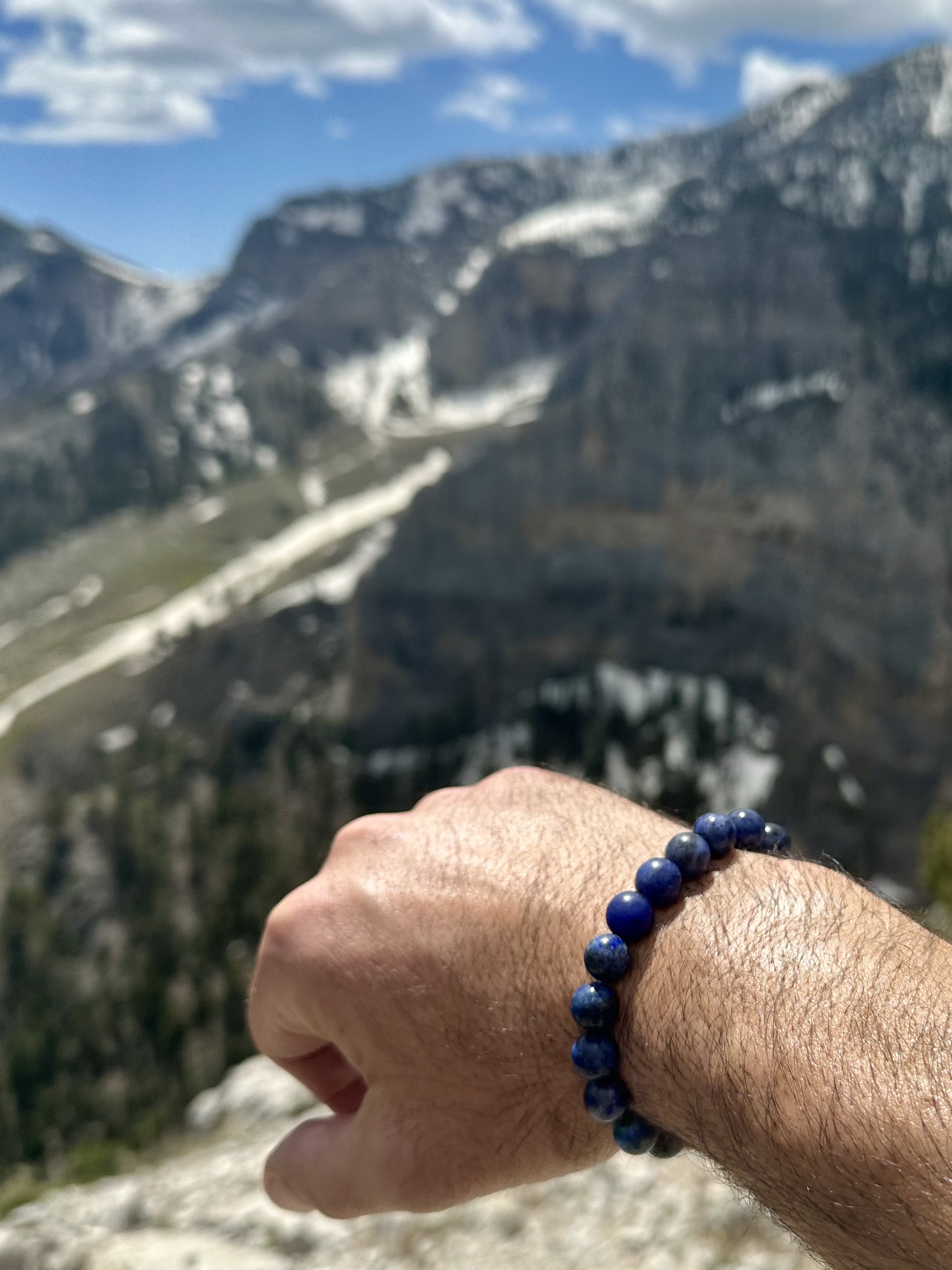
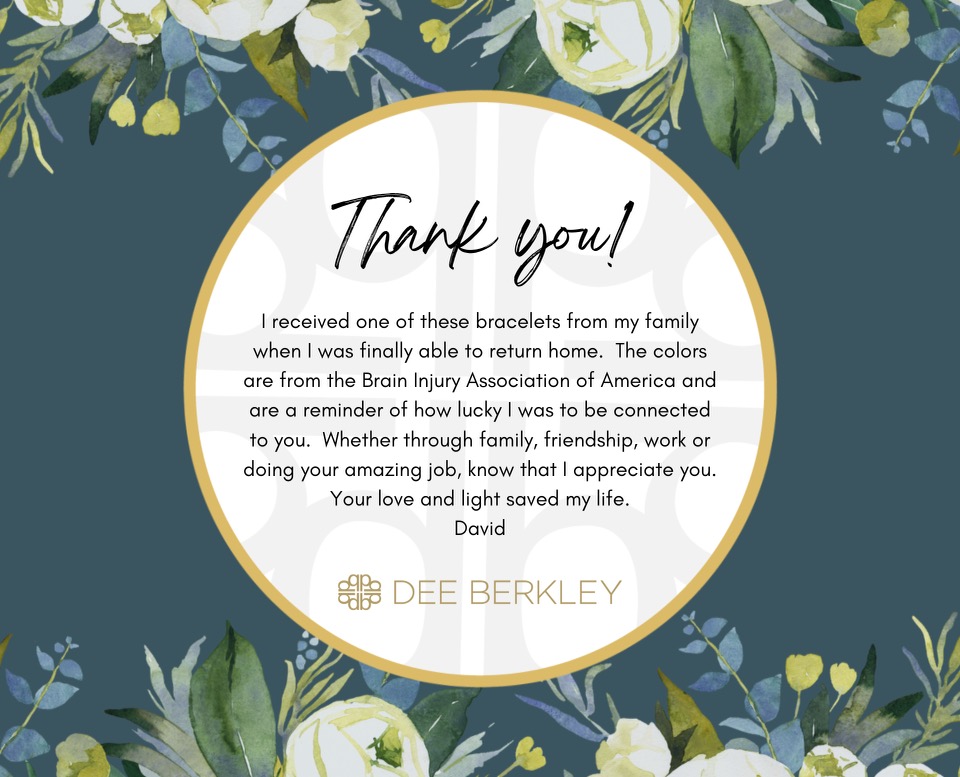
Upon leaving Colorado I had been cleared to return to swimming and biking indoors but discouraged from running or helmeted sports for six months post accident. Running was specifically mentioned for the amount of jostling that occurs. This became an interesting discussion point throughout my journey as I was repeatedly reminded that the initial recommendation had been twelve months but based on my recovery six months had been discussed. What made things less clear for all of us is that there was no follow up that measured anything that gave me an “official” thumbs up to return to all normal activities. I’ve also learned that I really dislike being told I can’t do something but, in my opinion only, I think I’ve been pretty good at listening to the experts.
That said, I returned to suck more at swimming, especially with a somewhat bum shoulder 😀 and riding A LOT indoors. For those that know about indoor cycling, one benefit is I have leveled up tremendously in the Zwiftverse and have even somewhat gotten used to 3+ hour indoor rides, but I still don't recommend them to anyone. It was nice to resume some normalcy regarding exercise as it returned a sense of purpose. In addition to swimming and indoor cycling, my coach found two new things for me to do going nowhere; I now got to spend time on the stair climber and rowing machine. The rowing machine was also somewhat interesting as my shoulder/ribs were still healing it felt like I was only able to do 30/70 L/R but I was still able to go nowhere quickly.
However, all that changed on November 10th. My PFO closure procedure pushed the date back slightly longer than I wanted, but on a beautiful Friday afternoon, I finally rode my bike outdoors again! My friends Doreen, Greg, Ken and Noah joined me as we rode most of the same route I did on March 12th. We stopped at the scene to take a photo before returning home. People have asked me how it felt and the only answer I can give is "Good!." Prior to the ride I had asked myself the same question and had anticipated that there may be some emotional reaction, but it really just felt like another day outside which IS a good thing.
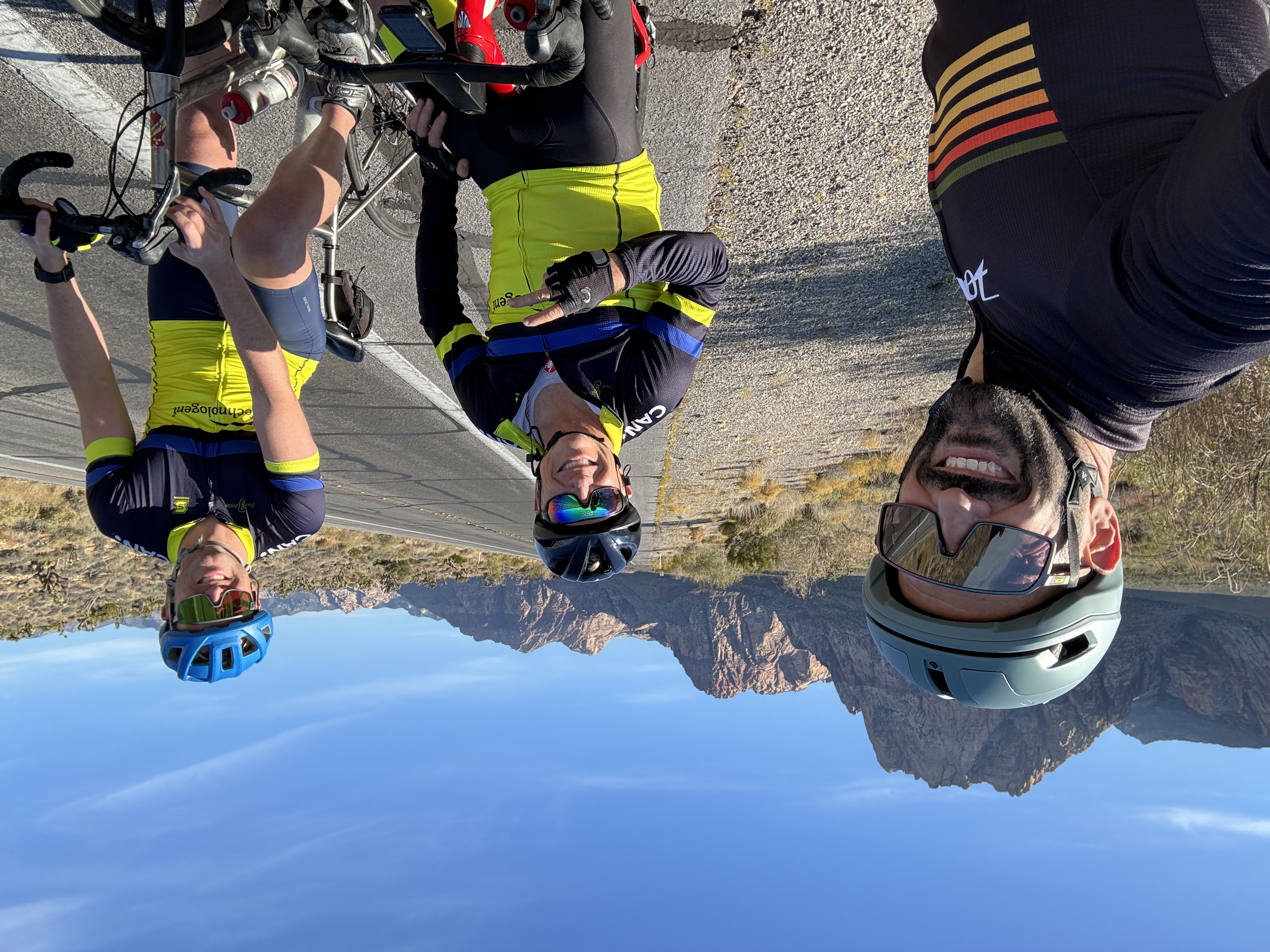
Hawaii trip
When we got back in town we continued to try and return to normal life including many dinners with family and friends. I don't remember how it came up, but Jess and I decided that we should reward ourselves with a trip somewhere. We started looking at some unique options on Costco travel, Expedia and all the rest but we ended up deciding that since we know and love Hawaii, let's just go there. I started this section with a mention of family dinner because when we finally booked the trip it was immediately following a Sunday dinner that left Wednesday so no one really had any idea we were going until we were gone.
We flew Southwest direct to Maui and checked into our Hotel that was right near Aiport Beach which is an area just North of Lahaina. In writing this section I'm reminded again how lucky we have been this year as most of the places we toured around are no longer there. Below is a quick list of some of the things we did on our trip to Maui:
Hike around a closed golf course in Kapalua. It's amazing how quickly the vegetation has grown over this course but the cart path made for a nice hiking path.
I was able to do some open water swimming at one of our favorite beaches in Napili where I got to stalk a turtle for a while.
We booked a snorkeling trip to Lanai where we saw lots of dolphins along the way and a few turtles along with a lot of fish at the snorkeling spot.
Dinner at Honu, Fleetwood's and Star Noodle which are currently no longer open. They were all great places we really hope to be able to see again.
Dinner at Kapalua golf course. This was actually a very pleasant surprise. Great food and views and the prices were reasonable for the quality.
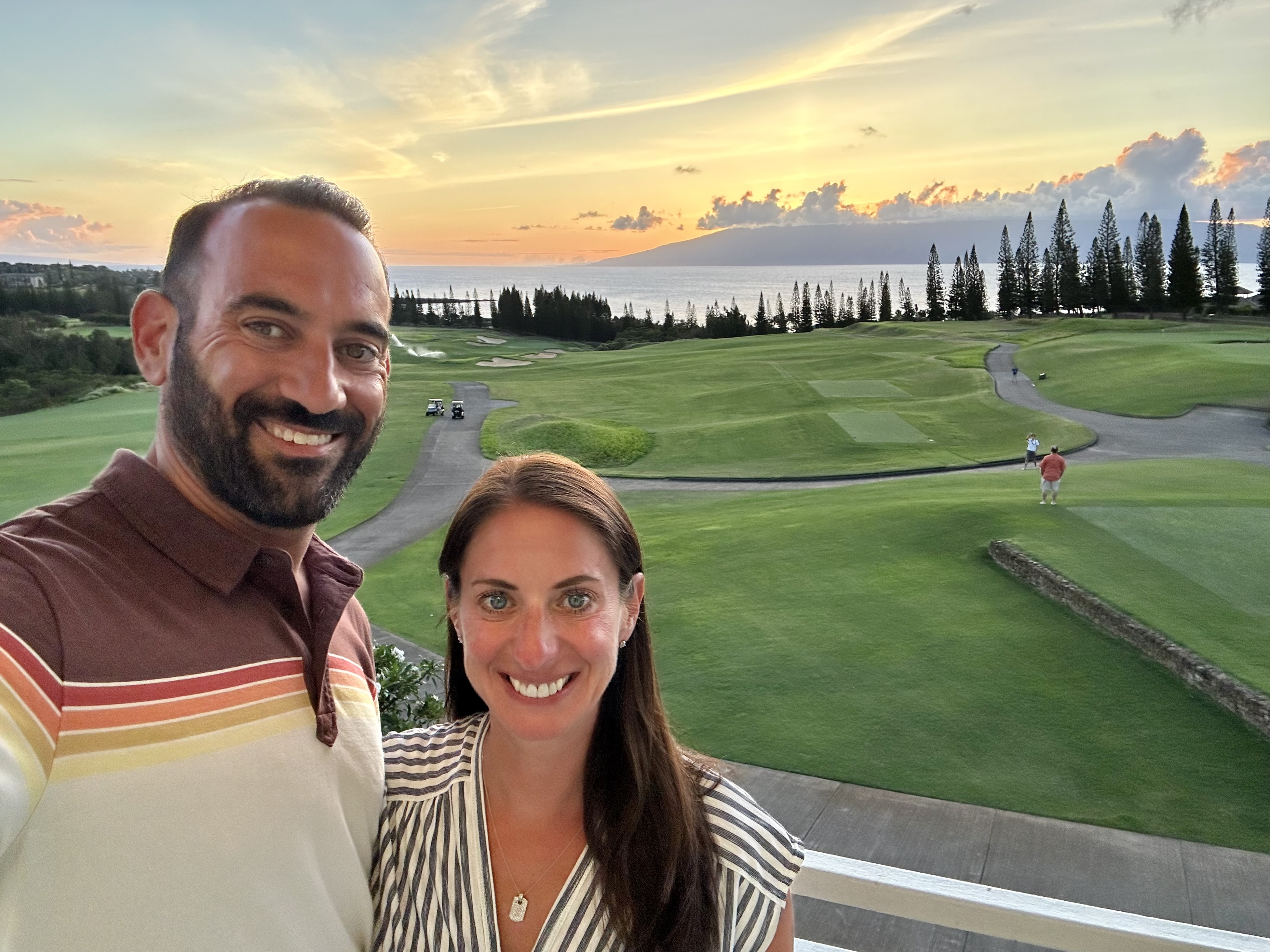
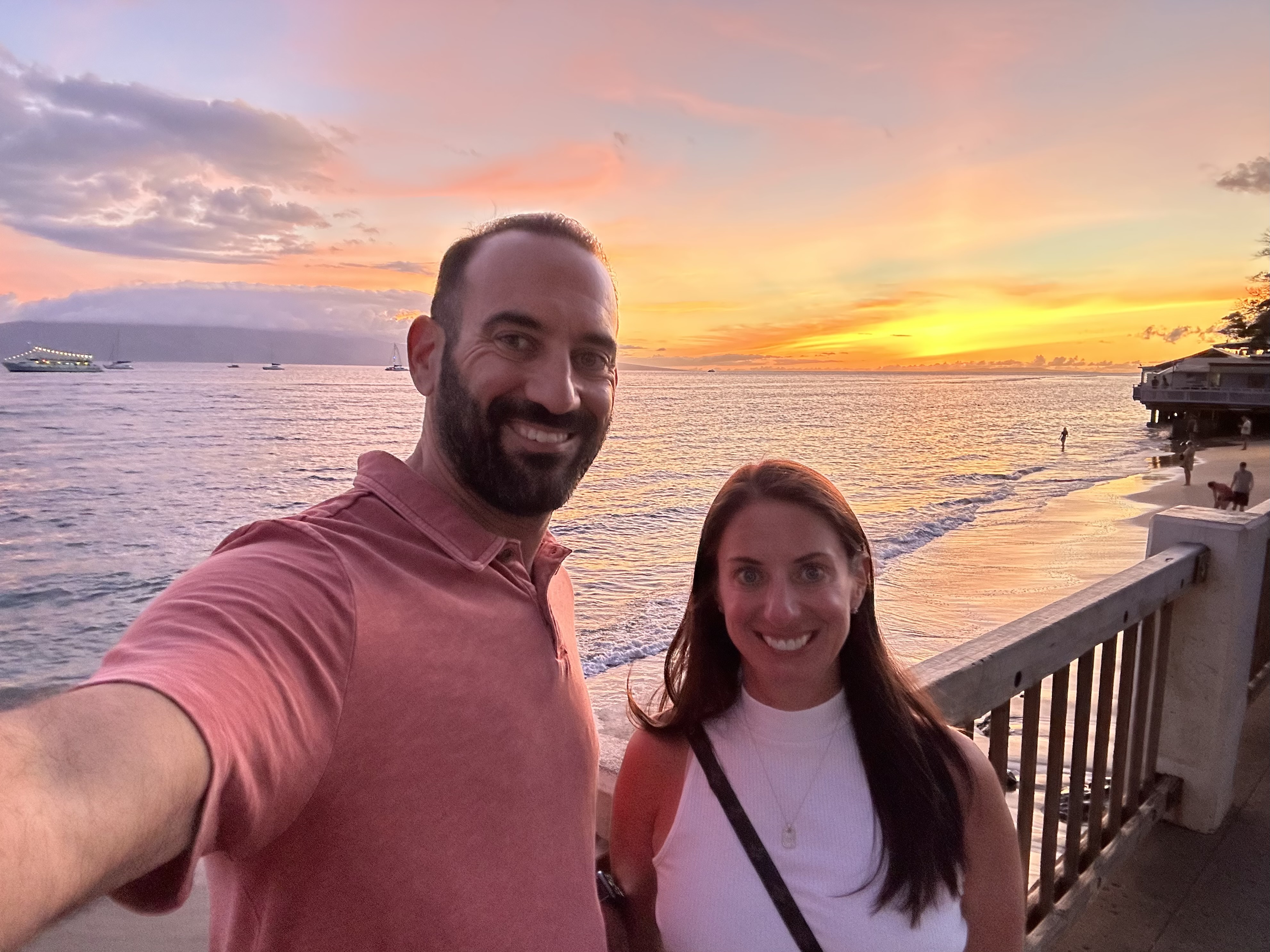
Cabo Trip
At some point while I was diligently working at MGM, we had booked a trip to Europe that started in Amsterdam, stopped in Brussels and finished in Paris for our anniversary. However, out of an abundance of caution regarding recent global events and protests we pivoted to a nice relaxing trip to Mexico. We found a great VRBO that ended up being even better than the photos online and ended up being in close proximity to some of our favorite adventures during our trip. In the photo below the red X was our balcony as seen by the Hyatt property we walked to most mornings.

During one of our morning walks we saw that there was a new coffee shop (T1M3 Coffee) located in a building that looked like it was still under construction. We decided to go in and were blown away by the decor inside. They had good coffee too.
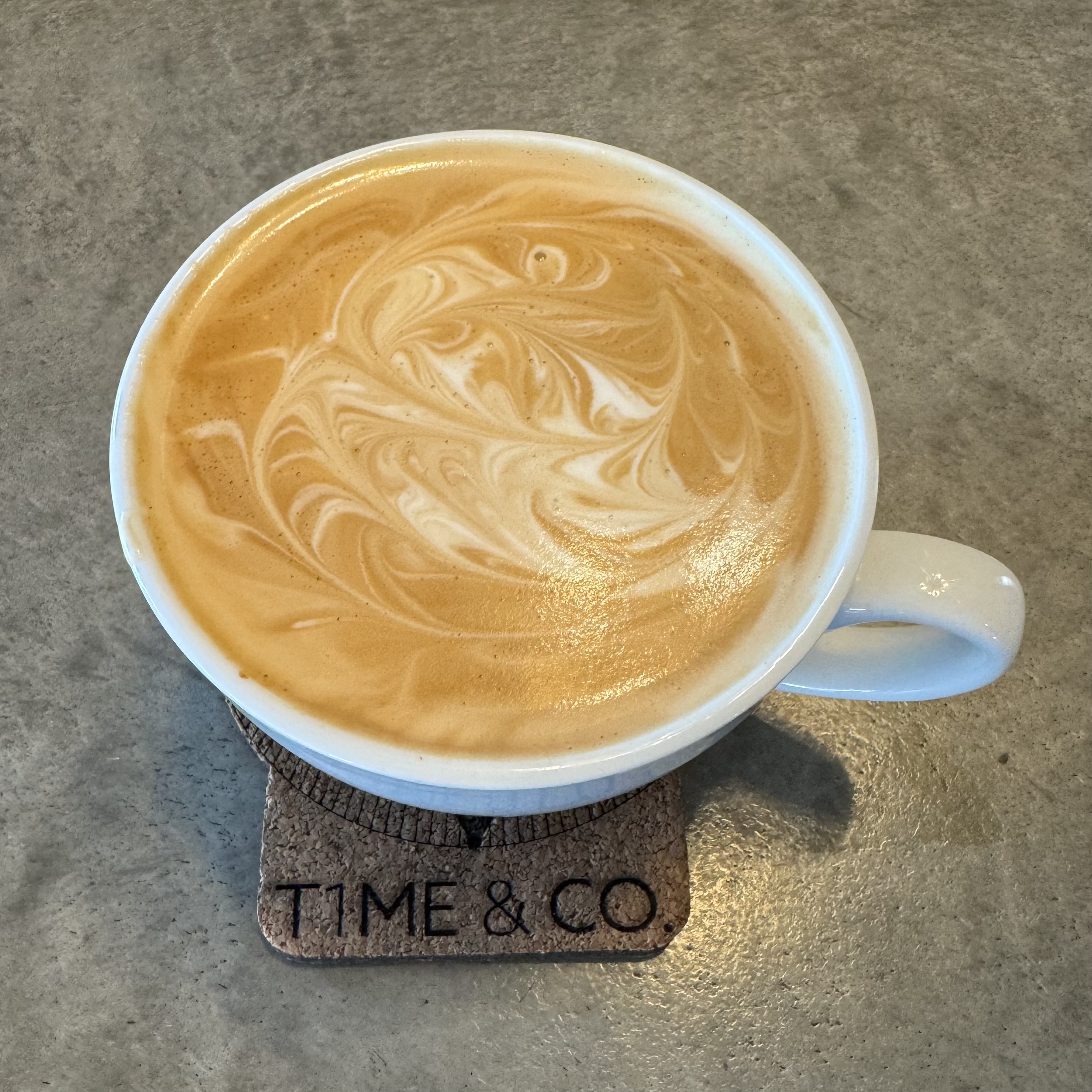
Jazz on the Rocks is an incredible restaurant that is the sister restaurant of Sunset Mona Lisa that offers incredible views of Lands End and just so happens to be within walking distance of our VRBO. We had great service, food and views.
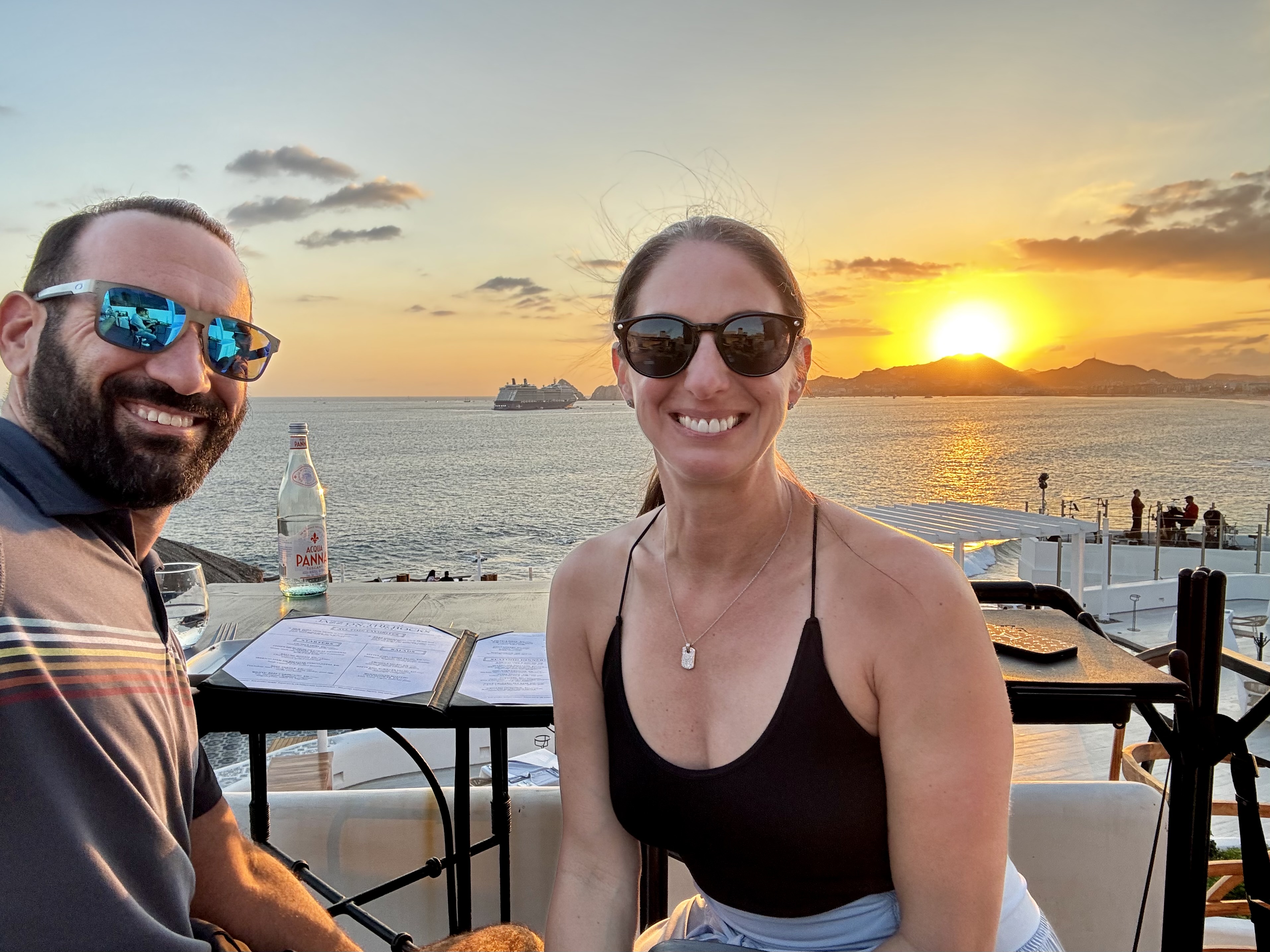
My cousin Sara recommended that we eat at Flora Farms which is a famous farm-to-table restaurant. During my research, I learned that they also offer cooking classes and we signed up for their Tamale cooking class. It is an incredible place to see and they really made the experience enjoyable and informative. We made three tamales each, toured the farm, ground our own salsa in a molcajete and watched our guide make an incredible rosemary guacamole. Definitely give this place a try when you make it to Cabo.
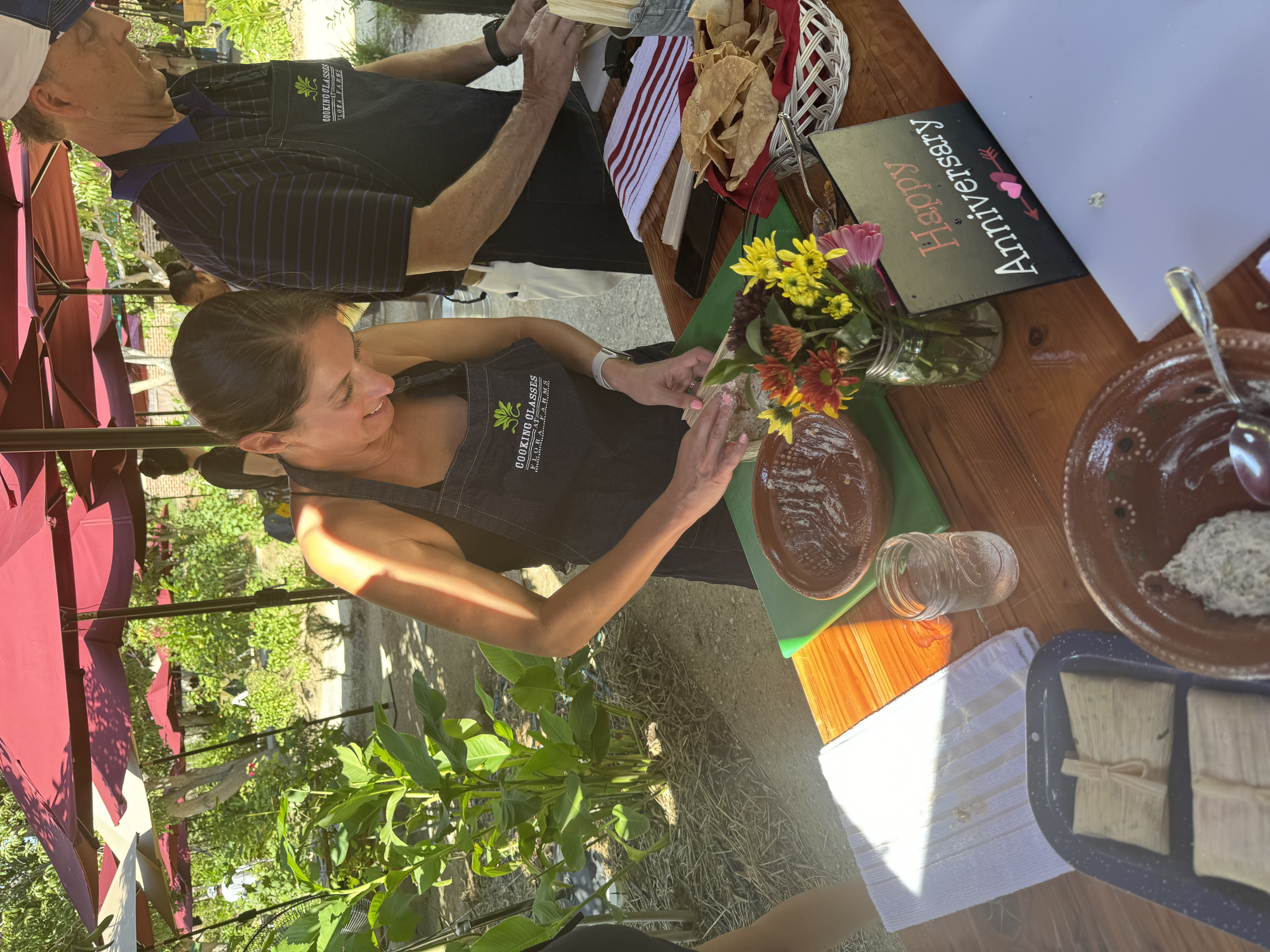
One of Jess's coworkers loves Cabo and recommended we try massages at The Sand Bar. It's a pretty incredible little operation where you can get a 90 minute massage for a reasonable price while listening to the ocean in the background.
We also signed up for a sunset dinner cruise that was very well reviewed. It was a large sailboat that minimizes the number of passengers and provides excellent passed hors d'oeuvres before a rather fancy steak and shrimp dinner served after sunset.
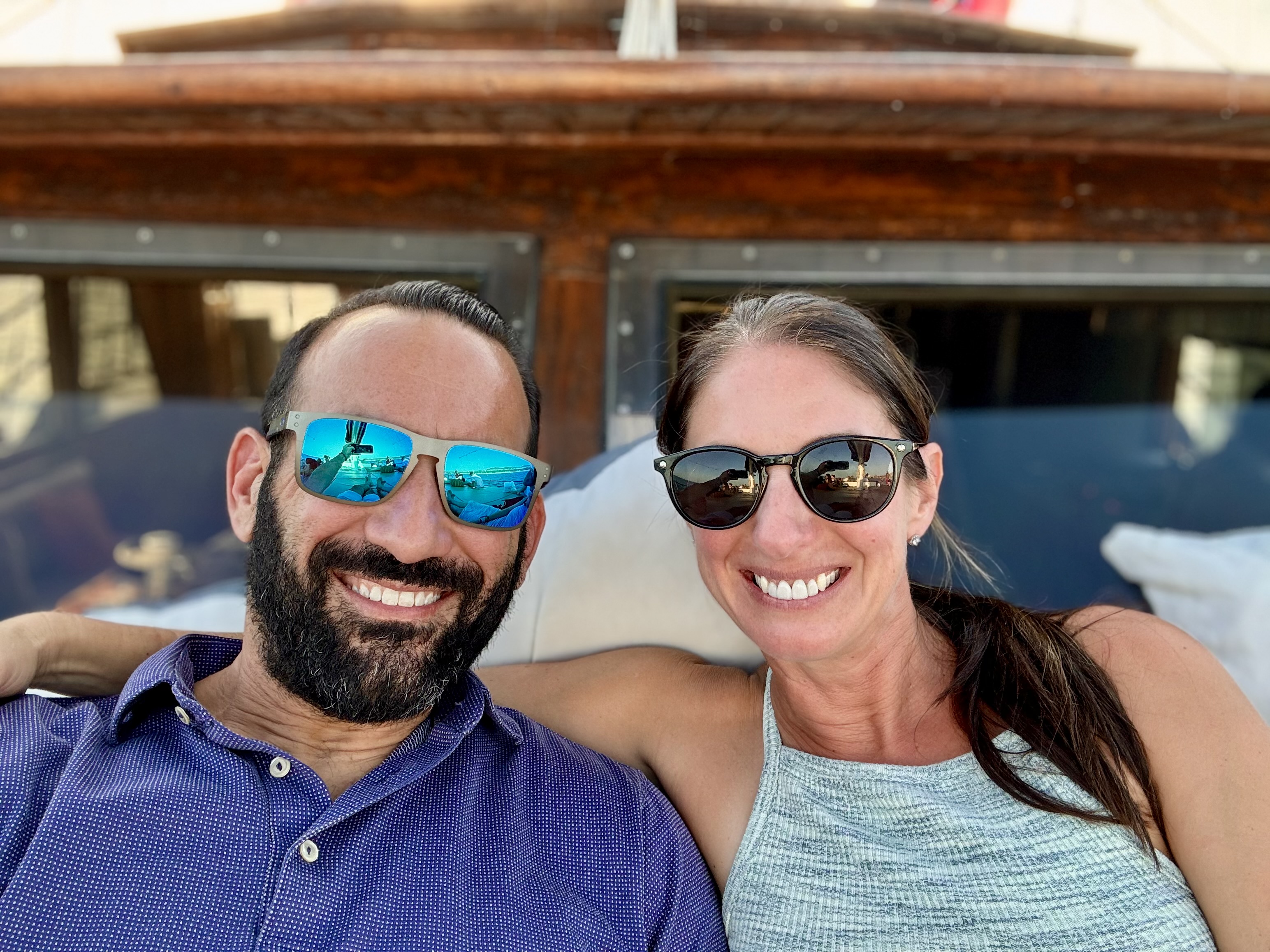
I think the highlight of our trip was a hike that Jess found to the top of Mt Solmar, otherwise known as Lands End. It is on private property but Enrique leads a free guided tour along with his canine companions. Yep, Enrique owns the dog shelter just outside of where all of the cruise ship passengers arrive and offers daily tours of beautiful and historic scenery. One of the dogs that joined us even looked a lot like our dog Corduroy.
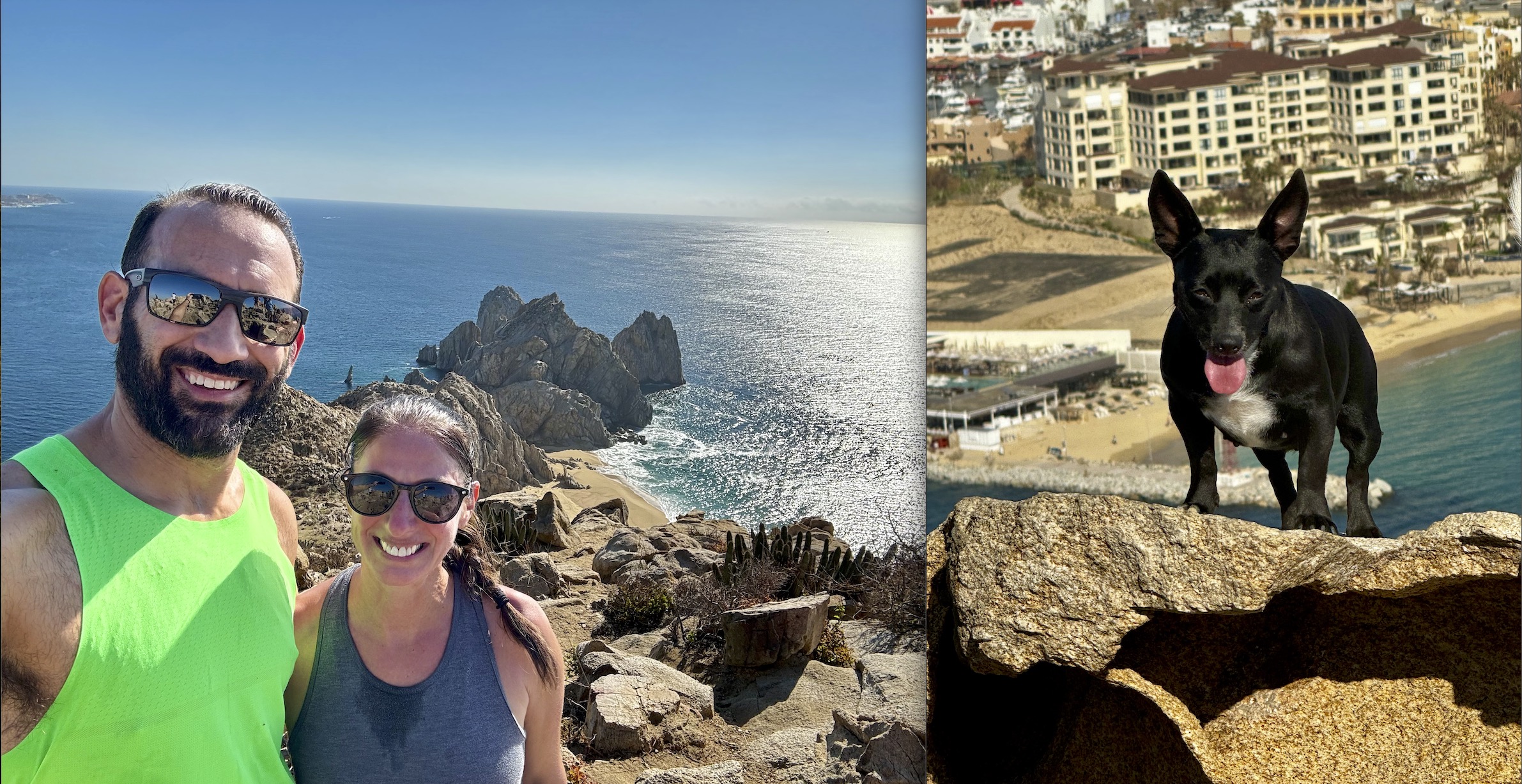
Disneyland
For my Aunt's 70th birthday, she decided to throw a party that included a family day at Disneyland over Labor Day weekend! The party on Saturday night was great to see all her friends and family share a beautiful night that she coordinated perfectly. The next day the family made a trip to the Magic Kingdom and were greeted by the debut of all of the Halloween decorations including the Haunted Mansion's transition to the Nightmare Before Christmas. What was more special than that is that it was Jess's first trip to Disneyland. I wasn't permitted to ride the more thrilling rides but I was able to do Pirates, Haunted Mansion and the Jungle Cruise plus I got to introduce Jess to Bengal BBQ and the famous Corn Dogs.
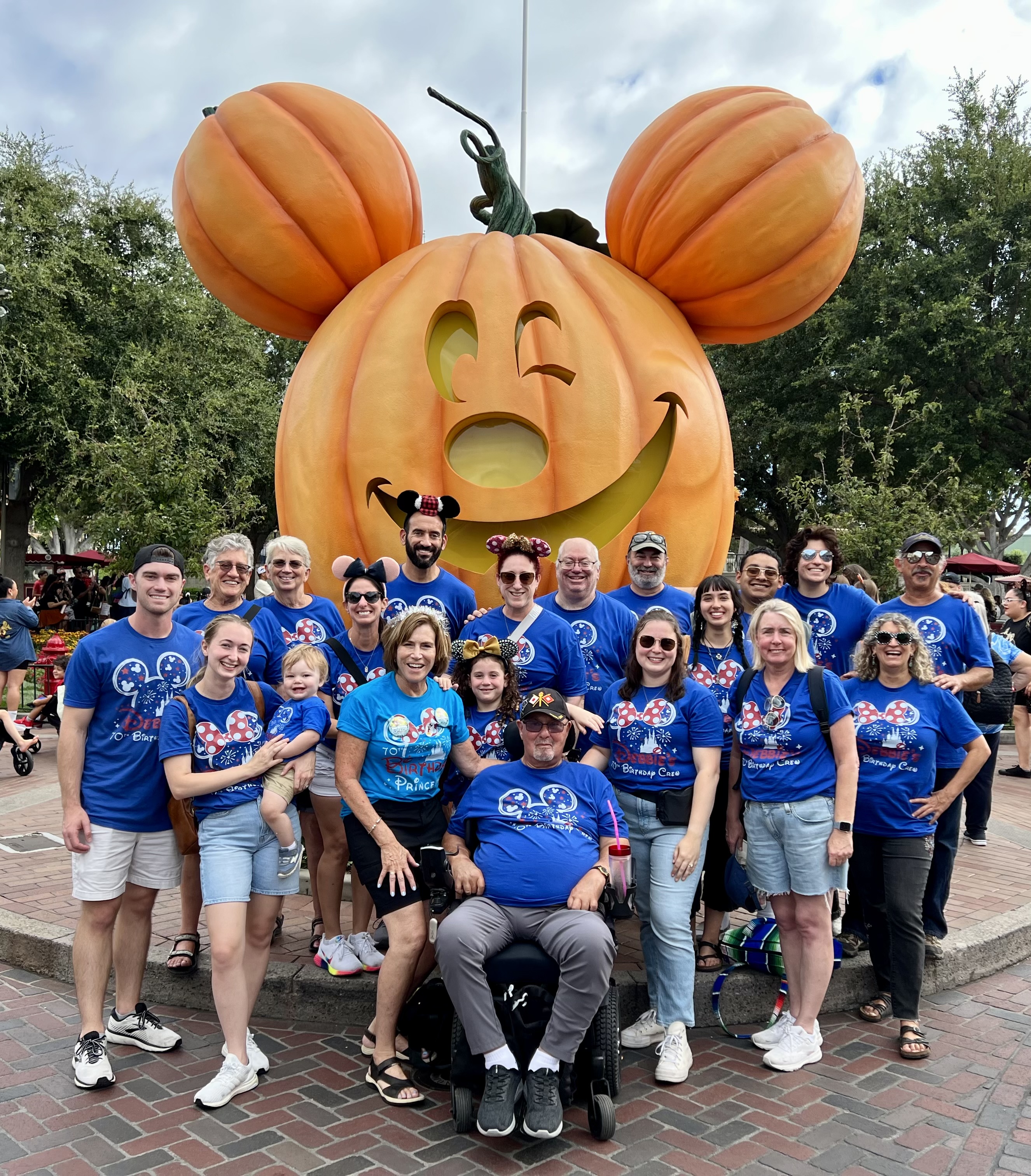
The End
Congratulations! You've officially made it to the end of this update. I know it was long and you probably won't believe it, but this was the condensed version. If there's anything you'd like to know more about, feel free to ask me anything, anytime.
I'd like to thank you for taking the time to read this. After writing the first update I didn't realize how many people would actually read it. I originally wrote it just so I wouldn't forget some of the details but after rereading it I realized just how far I've come in such a short amount of time and I am truly grateful to be here where I am today. It's also been somewhat cathartic to just sit down and do something I normally don't do so thank you again for joining me.
In closing, I'd like to thank everyone for all of your support throughout this journey. It really has been amazing to see firsthand how many people genuinely care for others and how just asking how someone is doing can change their attitude. I'm sorry that I can't name you all independently but just know that all of my family, friends, coworkers, doctors, nurses and all of the support staff really are appreciated for your work and encouragement throughout this year.
Original Blog Post - https://blog.lehrner.com/tbiupdate
#MoreThanMyBrainInjury
Subscribe to my newsletter
Read articles from David Lehrner directly inside your inbox. Subscribe to the newsletter, and don't miss out.
Written by
